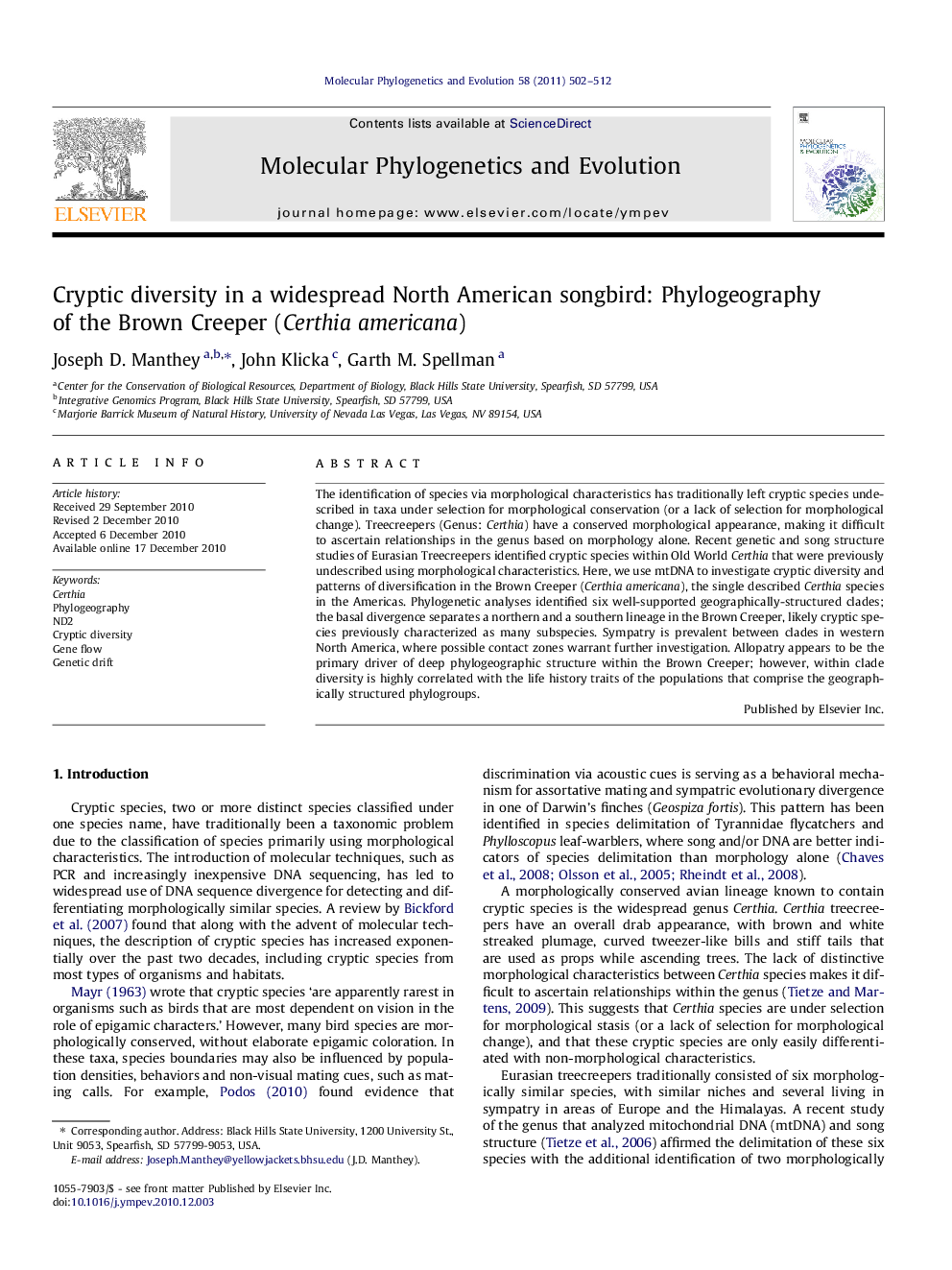| Article ID | Journal | Published Year | Pages | File Type |
|---|---|---|---|---|
| 5920740 | Molecular Phylogenetics and Evolution | 2011 | 11 Pages |
The identification of species via morphological characteristics has traditionally left cryptic species undescribed in taxa under selection for morphological conservation (or a lack of selection for morphological change). Treecreepers (Genus: Certhia) have a conserved morphological appearance, making it difficult to ascertain relationships in the genus based on morphology alone. Recent genetic and song structure studies of Eurasian Treecreepers identified cryptic species within Old World Certhia that were previously undescribed using morphological characteristics. Here, we use mtDNA to investigate cryptic diversity and patterns of diversification in the Brown Creeper (Certhia americana), the single described Certhia species in the Americas. Phylogenetic analyses identified six well-supported geographically-structured clades; the basal divergence separates a northern and a southern lineage in the Brown Creeper, likely cryptic species previously characterized as many subspecies. Sympatry is prevalent between clades in western North America, where possible contact zones warrant further investigation. Allopatry appears to be the primary driver of deep phylogeographic structure within the Brown Creeper; however, within clade diversity is highly correlated with the life history traits of the populations that comprise the geographically structured phylogroups.
Graphical abstractDownload full-size imageResearch highlights⺠Used mtDNA (ND2) to investigate cryptic diversity in the Brown Creeper. ⺠Phylogenetic analyses identified six geographically-structured clades. ⺠Sympatry is prevalent between clades in western North America. ⺠The processes driving divergence vary and appear correlated with migratory behavior.
